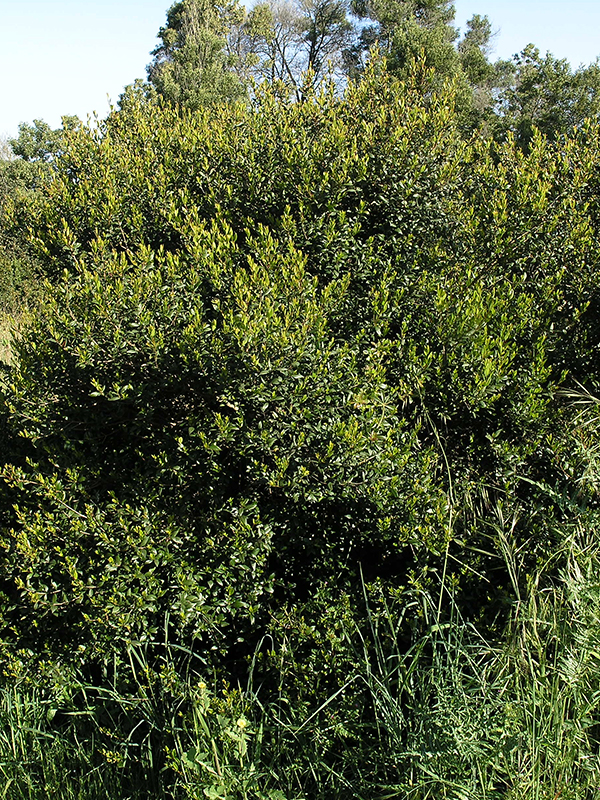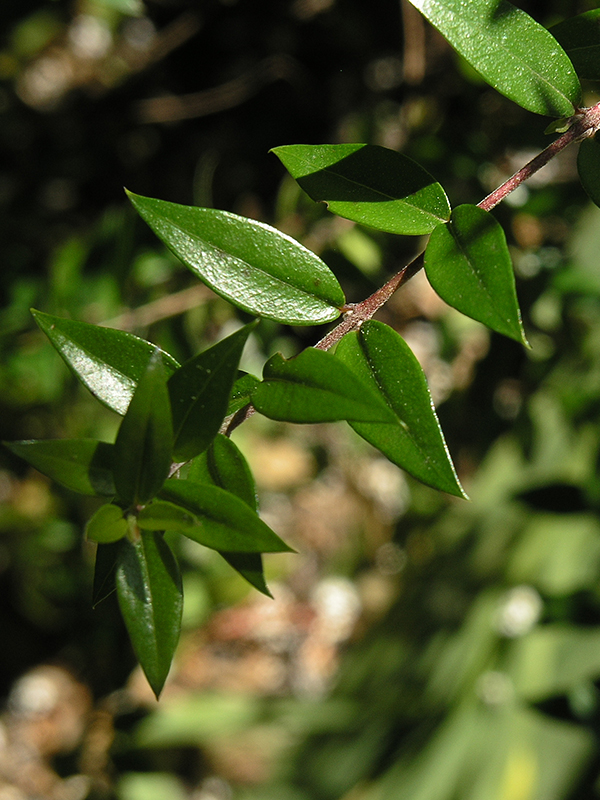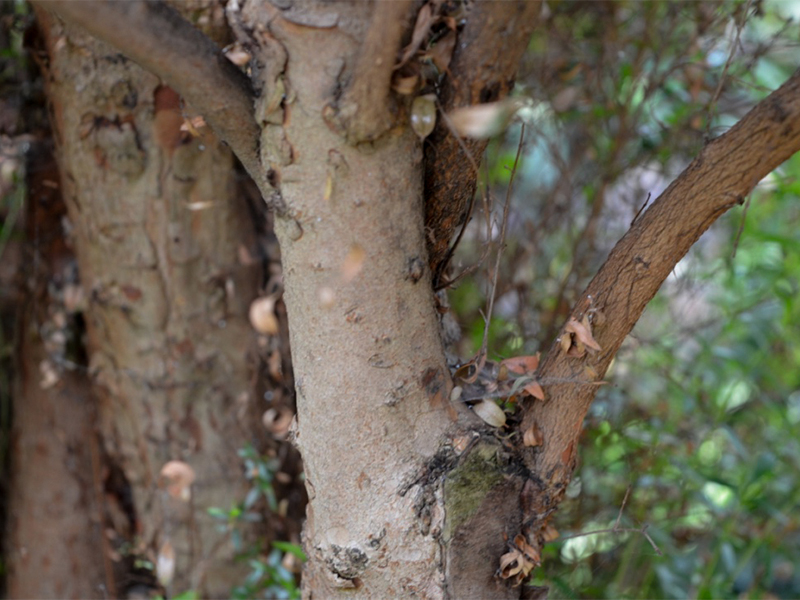| General Description | A sturdy ornamental shrub, blooms are white in the summer and produces edible berries in autumn. |
| ID Characteristic | Green elliptical leaves grow to be 5 cm long and release a strong aroma when crushed. |
| Shape | A dense shrub or tree that can easily be trained to hold different forms. |
| Landscape | A low maintenance ornamental shrub or small tree, it can be used as an informal hedge. |
| Propagation | In late winter, soak seeds for 24 hours in warm water before sowing them in a greenhouse. Move each seedling to individual pots as soon as they can be handled. The first winter should be spent in the protection of the greenhouse. |
| Cultivation | Grows best in well-drained, moist soil and sheltered from high winds. |
| Pests | Mites and scale. |
| Notable Specimens | Centennial Conservatory, Thunder Bay, Ontario, Canada. |
| Habitat | It is able to withstand coastal conditions but is tender to frost. |
| Flower/Leaf Bud Description | The buds are small and unnoticeable. |
| Leaf Description | Leaves are elliptical or ovate, up to 5 cm long. |
| Flower Description | 5 petals create a bowl shape with numerous stamens, up to 10 cm across. They are hermaphrodite. |
| Fruit Description | Edible, ovoid berries ripen in October, bearing several seeds, up to 1 cm in diameter. |
| Colour Description | The bark is light brown or grey. Leaves are dark green. Flowers are white. When ripe, berries are purple to blue-black. |
| Texture Description | The leaves are leathery and the bark is smooth. |



